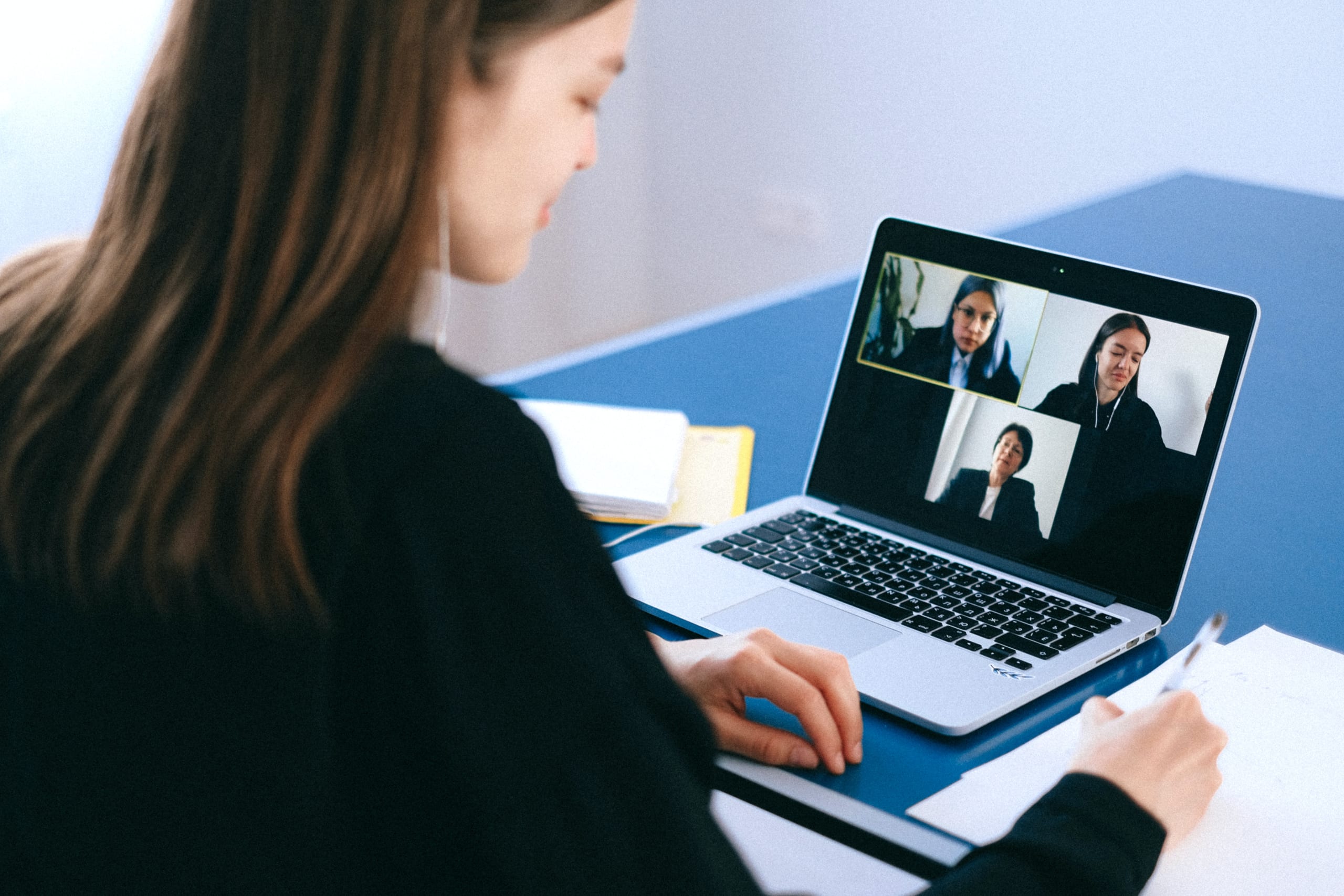The evolution of the digital employee experience prior to 2020, in hindsight, did not fully prepare us for what was to come. This year, workers in every sector of the global economy became remote employees – all at once – and the digital employee experience became the entire employee experience. On top of that, work for so many became enmeshed with childcare, management of physical and mental health through trying times, and the novelty of staying home for months on end.
The future of work arrived sooner than some organizations were prepared for – and with complications no one expected.

This year’s unexpected test drive of the future of work, however, has revealed some enduring truths and new opportunities to improve employee engagement and happiness, no matter what the next normal looks like. Let’s take a look at some of the lessons learned in 2020 – and recently touched upon at Relevance 360 – that will resonate in the years to come.
Hitting Reset on the Employee Experience
The most glaring change to the employee experience is this: the days of the open plan office space are likely behind us – work-from-home arrangements will become more common.Stanford University found that in May 2020, 42% of the U.S. labor force was working from home full time, a group accounting for “more than two-thirds of U.S. economic activity”. A temporary adaptation is settling into permanence as more and more companiesswitch to long-term remote workforces.
The consequences of this change of scenery are manifold. Let’s break down a few of the questions that employers will have to answer as they chart the future of the employee experience.

Without the common bond of the physical space holding teams together, how do employers find other ways to maintain the levels of collaboration that would exist in the office? One way to do this is by having a focused mission and purpose to guide teams, according to Sherisa Rajah Baird, Future of Work Advisor and Director of Global Employment Law and Compliance at Elements Global Services.
Speaking at this year’s Relevance 360, Baird noted that employers will need to evaluate their now-disparate teams and tools to answer key questions:
- How do we tap into our employees and get them to buy into what our new mission is, what our new purpose is?
- How do we get them to bring their thoughts to the Center of Excellence in the workplace to help us innovate?
Employees are grappling with the effects of the changes associated with the wholly-digital employee experience. Research has shown what we all know: our workdays became longer, the number of meetings increased, and emails piled up more quickly.
And, of course, these impacts don’t hit home evenly. For example, the shift to digital work experiences will affect each generation differently. Less-digitally native generations may struggle in the transition.
And generational differences are just one of many factors that contribute to the unevenness of the work-from-home impact. The reality is that we each live fundamentally different personal lives – and that now has a more significant bearing on how we work. It is critical that companies address the differing ways employees can participate, contribute, and be successful through digital channels.

Removing the office as the focal point of the employee experience is not just a challenge to overcome, however. According to Baird, the shift to work-from-home opens up new opportunities for people often left out of the hiring process, such as working mothers or minorities.
“We’re talking about a distributed workforce,” Baird said, “from all over the globe, and ultimately we’re able to tap into talent and perspectives that are on the ground in over 151 countries as a result of that. And you see the impact of that when you’re getting perspectives, information, and understanding of diversity in its truest and most form.” The possibility of a new and diverse workforce opens up new avenues for innovation.
When you have that diverse and disparate workforce, you have to get employees to engage and tell you what matters to them, according to Rosanna Stephens, Senior Product Manager at Adobe, who leads enterprise wide workplace transformation for employees.
“From a knowledge management perspective,” Stephens said, “this ties in with the employee value proposition. We say that great ideas come from anywhere in the company, so we try to build a knowledge management capability to connect people so that they can help each other and help themselves and share ideas.”

The right digital employee experience is necessary to make collecting and distributing knowledge across a global workforce a natural part of the company culture. In order to overcome the pitfalls of a disparate workforce and realize the new opportunities it carries, a unified, centralized approach to knowledge must be adopted. Whether it’s department-specific knowledge or HR and IT information, keeping employees successful means removing the barriers to this information.
Not every company is there yet; but every company is certainly asking these questions to improve the digital work experience. Let’s dive into a few key ideas to keep in mind as you look to build a sustainable digital employee experience.
Thriving in the Digital Employee Experience
As consumers, we’ve come to expect certain levels of convenience, automation, and personalization in our interactions with companies. But as employees, we may find that the same attention has not been paid to our internal digital experience. Without the benefit of face-to-face human interaction in the workplace, many in the newly-remote workforce discovered that the digital employee experience left much to be desired.
However, intrepid leaders across the organization that advocate for the employee experience have worked tirelessly to adapt. Here’s a few areas they’re covering to do so:
1) Bring Knowledge to Where Employees Work
The ease of turning to a colleague to ask a question is nice, but it is not a sustainable or scalable solution for empowering employees with the knowledge they need. Capture institutional knowledge and bring it into your company’s intranet to give everyone in the organization access to the same insights.
Access to knowledge – both institutional and general – needs to be as convenient as possible. For leaders helping to enable and engage employees, ensure your company provides self-service options like smart chatbots that intelligently surface the relevant content employees need to get the job done.
2) Prioritize Transparency

We know that the workforce of the future is in flux, and employees know that, too.According to PwC, 60% of people think “few people will have stable, long-term employment in the future.” Anna Dorbyk, Global Director Internal Channels at Manulife and communication expert, extolls the virtue of transparency from leadership in times like these. She spoke at Relevance 360 about how Manulife is bringing transparency to the organization:
“Look to your leadership,” she said. “We’ve had regular ask-me-anything sessions with leaders, and they get out there on the stage, as it were, and they get asked any variety of questions. They’re on the hook in that moment to answer transparently.” It not only helps make employees feel heard, it also helps employees understand the big picture mission that’s uniting them.
3) Seek to Understand the Employee Journey
The benefit of a digital employee experience is that you have the opportunity to understand the employee experience better than ever in the moment – at any moment. Leverage quantitative data and anecdotal feedback to identify problem areas and then improve them.
Anna Dorbyk of Manulife recounted how much value they get out of tracking the user journey and interactions within the company’s intranet. Those breadcrumbs tell the story of what’s working and what’s not.
4) Support Employees through the Change

Change management is always difficult, but managing change in the workplace while managing massive social changes as well adds another layer.
All-in-all, the move to a predominantly digital employee experience will require more patience, according to Rosanna Stephens of Adobe. “Be patient. Offer the resources that they need. Whether it’s money or training or accessibility, whatever it is that they need to feel more comfortable. Listen to them, listen to that feeling of discomfort, and offer what it is that they need to feel comfortable with the change.”
Even something as simple as enhancing self-service capabilities can help employees adapt to changes.
Lay the Foundation for the Future Today
The disruption from the pandemic has opened up an opportunity to reimagine the employee experience and the future of the workplace. How companies respond to these changes will determine who gets to participate in the new normal workplace (can permanent work from home bring more diversity into the workforce?), how employees will manage work-life balance (you know it’s rough when people start tomiss their commute), and what success will look like (can performance be more important than presence in the workspace?).
The digital employee experience is here to stay and will continue to play an outsized role in our lives, even once happy hours move back to bars from Zoom meeting rooms. That means digital leaders must make the necessary adjustments to not only endure change but rather to harness the astounding value that it holds.
Dig Deeper
To learn more about how to adapt now and prepare to make the most of future opportunities, be sure to listen to the full Relevance 360 session: The Future of Work: Empower Employees to Drive Innovation.
In this increasingly digital world of ours, investing in the employee experience is ever-critical – but like everything else, it needs to be adapted. Read How IT Can Improve Employee Experience to learn more about what you need to do to empower your workforce today.
Curious how to boost your employee experiences inside of ServiceNow? Check out our ebook, which details how to reduce portal fatigue, create personalized experiences, and capture intelligence to drive improvements.


